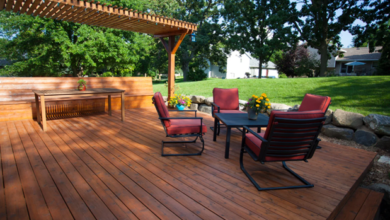Get the Best Exterior Paint Coverage with the Correct Calculator

Exterior painting of your house requires finding that perfect balance between using too much and using just enough to do the job. Not having enough leads to frustrating delays, while too much is wasteful. A paint calculator simplifies the task by providing you with precise measurements for walls, trim, and other exterior areas. Effective utilization of the proper calculator provides you with full coverage, is within your budget, and accomplishes the task without waste.
Why Exterior Projects Depend on Proper Paint Estimation
The success of your project heavily relies on correct paint estimation. Exterior surfaces tend to be bigger, more porous and require additional coats than interior walls. Overestimating leads to materials being wasted, while underestimating leaves areas uncoated or causes color discrepancy.
A paint calculator eliminates the guesswork by taking into account the surface area, paint type, and coats required. From accurate calculations by an exterior paint calculator, you can confidently prepare your project and purchase the right amount of paint for full coverage.
See also: Quiet Luxury: Understated Elegance in Lifestyle Trends
Steps to Calculate Exterior Walls Paint
To estimate exterior wall paint:
- Measure the height and width of each wall.
- Multiply the sizes to determine each wall’s total square footage.
- If your house has more than one wall, combine the individual amounts for a total.
- Subtract the square footage of unpainted surfaces like windows, doors, and vents.
The majority of paint calculators also include settings for these variables. With the finished dimensions entered, plus the type of paint and how many coats will be applied, the calculator spits out an accurate measurement. This includes it all and does not require extra paint to be used later on.
Paint Calculation for Trim and Accents
Outdoor trim and accents, such as windowsills, door trim, and decorative molding, require special calculations to cover them correctly. To find the surface area, measure the length and width of each trim piece and multiply them. There are trim options that are specialized in most calculators since these areas typically require specialty paint or additional coats of paint to be able to withstand wear and tear.
With this personalized approach, you purchase sufficient trim paint without wastage. Adding these factors results in a smooth, clean finish that makes your house more beautiful.
Things That Influence Exterior Paint Coverage
Several factors may affect the volume of paint for an exterior job:
- Surface texture: Textured surfaces such as brick, stucco, or wood siding tend to need more paint than smooth surfaces.
- Weather exposure: Exposed surfaces that experience rough weather might require additional coats of paint for maximum protection.
- Color selection: Moving from dark to light shades might require extra coats to achieve even coverage.
A paint calculator takes these factors into account, enabling more accurate estimates based on your specific project needs.
Maximizing Paint Calculator Accuracy Tips
For the most accurate results:
- Take accurate measurements of all surfaces and double-check your calculations.
- Round up to cover minor errors and touch-ups at all times.
- When working with several paint colors or sheens, estimate each separately to obtain proper estimates.
- Take into account primer requirements for extremely absorbent or untreated surfaces, as this will affect overall paint coverage.
Following these guidelines guarantees a smooth, efficient project and allows you to order the proper amount of paint confidently.
Careful use of an exterior paint calculator guarantees proper coverage and completion of your project. From painting the entire house to refinishing trims and accents, proper planning and estimation saves you time, reduces waste, and enhances the appearance of your home. With a thoughtful approach, you can effectively complete your project and have a fresh, vibrant exterior.





